CES 2016 is a wrap: more than 3,600 exhibitors introduced the latest in technology across 2.4 million square feet of floor space. From entertainment to the smart home, advances this year were incremental rather than revolutionary. Trends manifested themselves not as new product categories, but as subtle shifts in existing fields.
From streaming entertainment to the smart home, CES 2016 reflected an accelerating pace of innovation in tech.
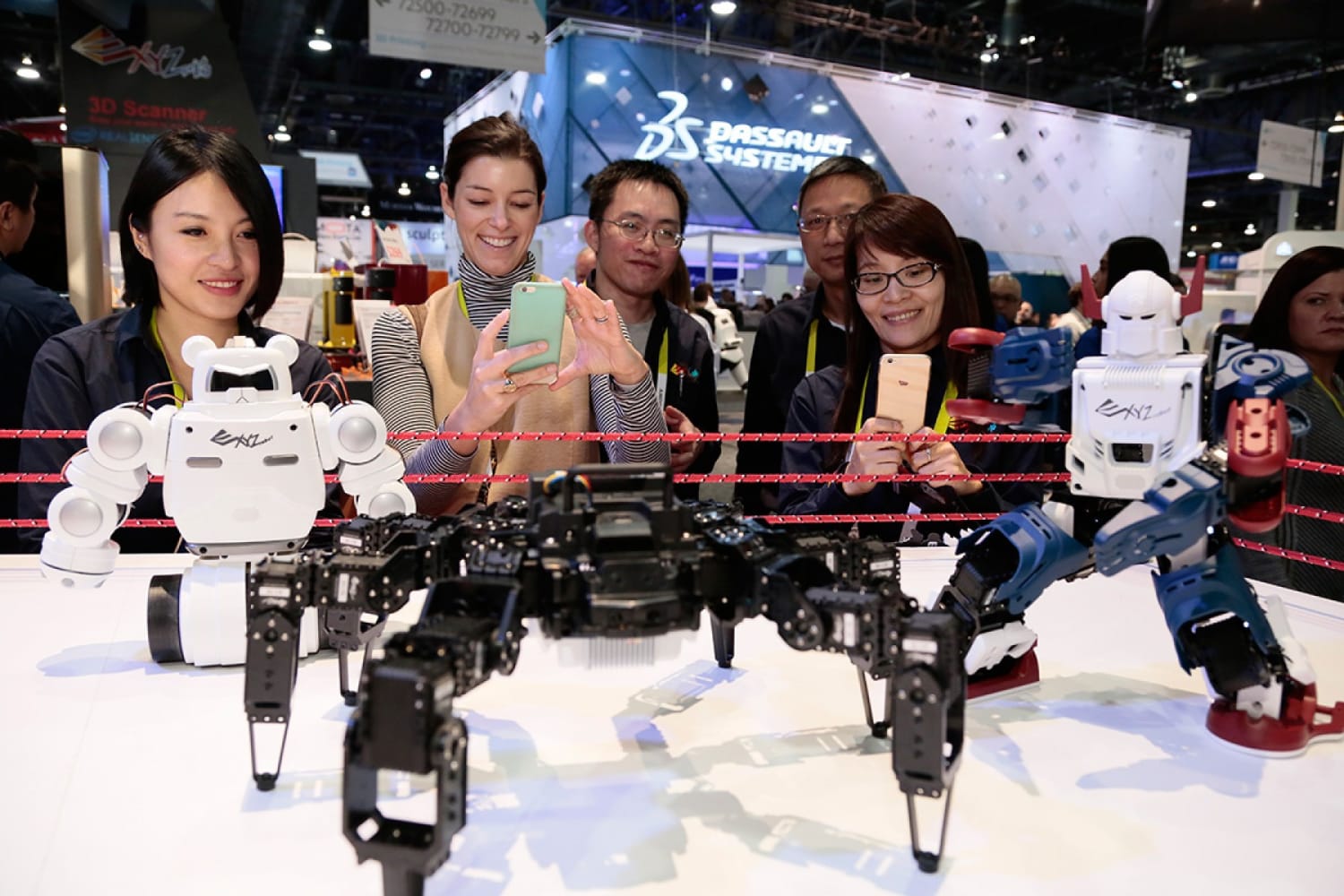

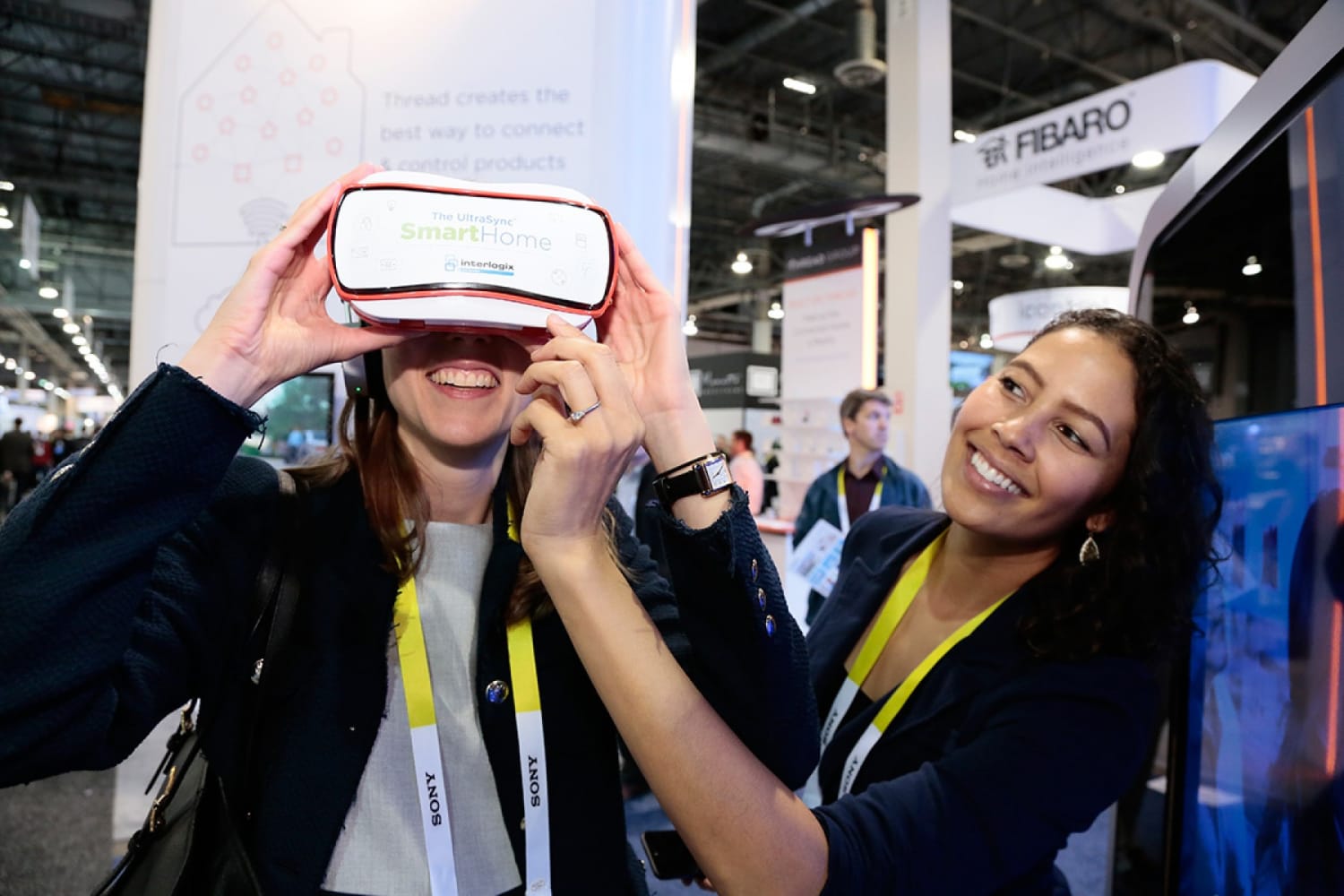
“The pace of innovation is becoming so fast,” said John Vary, innovation manager at UK-based retailer John Lewis. “There was a big emphasis this year on refinement … Last year it was about establishing something could be done. This year the products unveiled seemed to be better, more fine-tuned versions.”

On-demand world
As the conference opened, all signs seemed to point to the end of cable television as we know it, as consumers rebel against paying over $100 a month for inconvenient and ad-saturated programming. At an opening keynote, Netflix CEO Reed Hastings said his company now reaches almost half of all US households.
Hastings wowed audiences with a teaser of the company’s forthcoming series The Crown, filmed on a $156 million budget, and announced that Netflix had just become available in 130 new countries, including India, South Korea, Turkey and Poland.
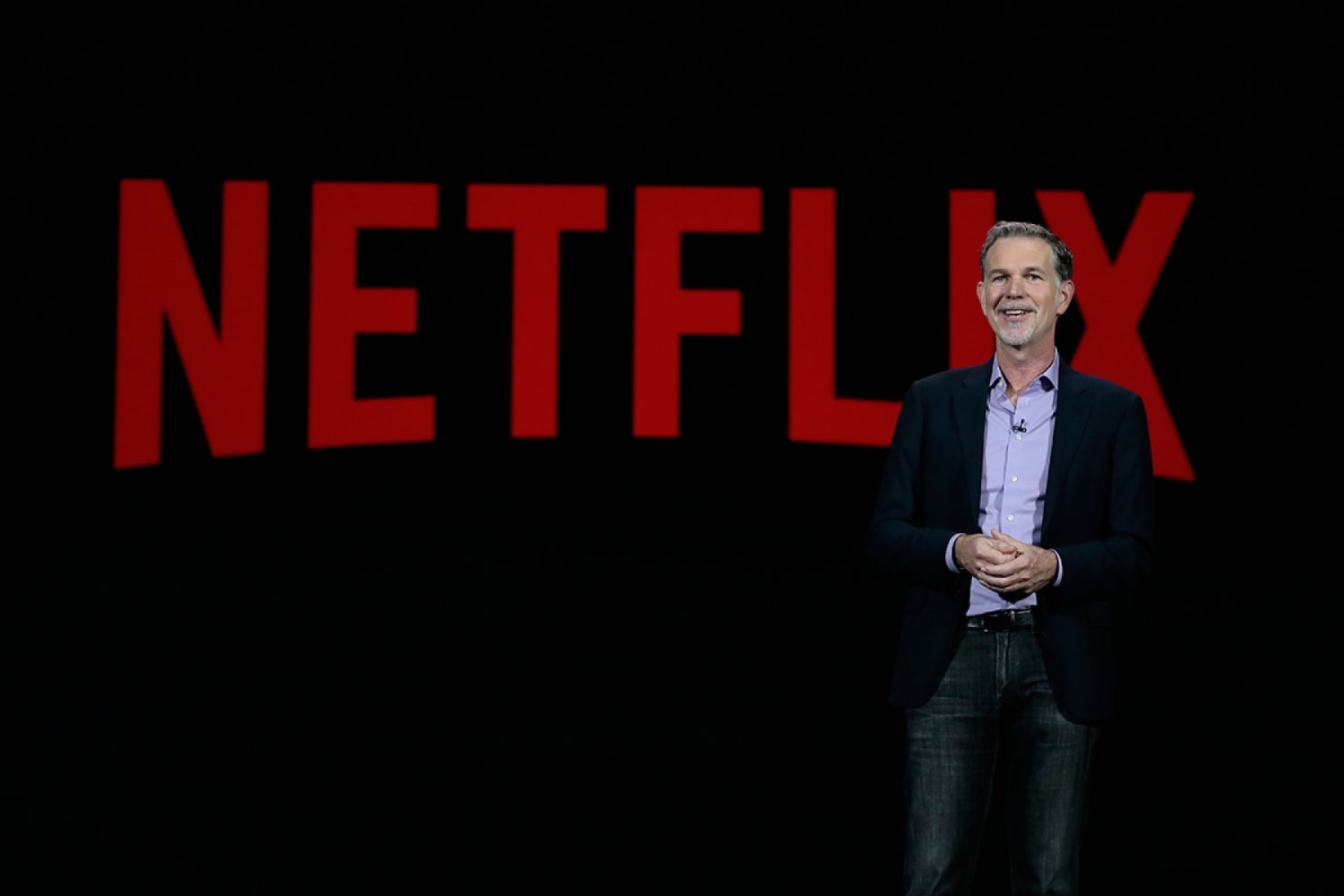
“Tune-in has been replaced by personal choices,” Hastings said. “We’re in an on-demand world and there’s no going back.”
Robert Kyncl, chief business officer at YouTube, attached a date to the end of traditional TV, saying that online video will be the key medium consumers watch entertainment by 2020. Video platforms like YouTube would only continue to grow, he said, because they work well on mobile devices, allow for diversity and a full spectrum of different tastes and identities; and are well suited to music sharing.
YouTube has started to formalize and extend its influence by creating YouTube Red, an ad-free subscription service, which will also offer original content in 2016.
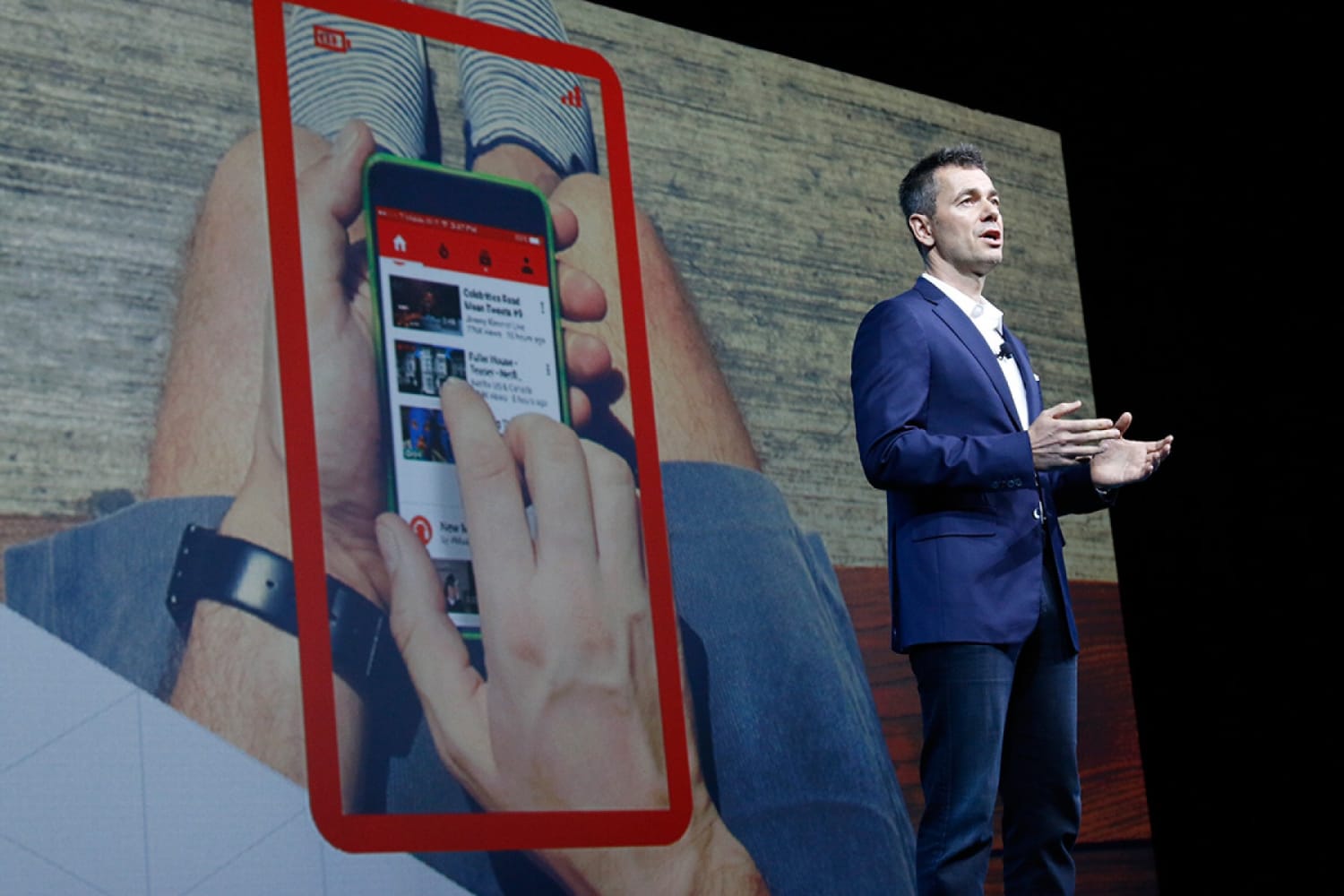
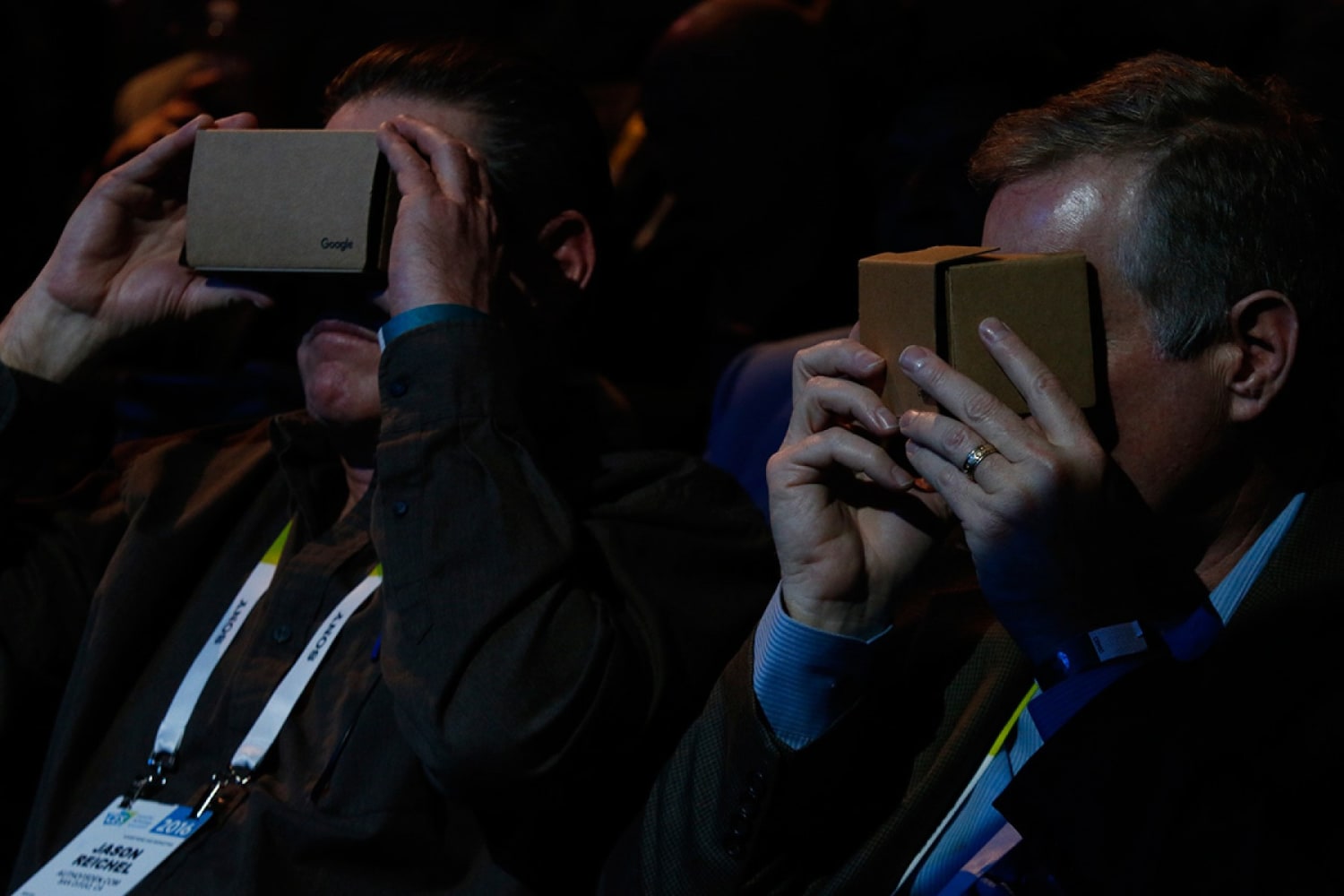
Sling TV, an online television service that launched at CES 2015, since then has added an impressive roster of channels to its lineup, including HBO and AMC, while continuing to charge only $20 per month for its service. At CES 2016, the company announced it would add ESPN3 to its offering, in addition to three existing ESPN outlets. Commentators in the past have cited live sports as a hindrance to mass cord-cutting, but this barrier, too, seems to have fallen away.
Context is king
Sling TV also contributed to an addition trend becoming clear this year: the pervasiveness of technology that understands context. Sling’s second-generation user interface features navigation that understands a user’s TV watching history and tailors recommendations accordingly. For example, it may know that a viewer prefers news in the morning, or children’s programming on a tablet device, and modify its suggestions to match.
“The new interface will leverage real-time data to help users navigate the content depth that we’ve brought to Sling TV,” CEO Roger Lynch said in a statement. “This is the beginning of a reimagined experience, one more personalized and relevant to each viewer.”
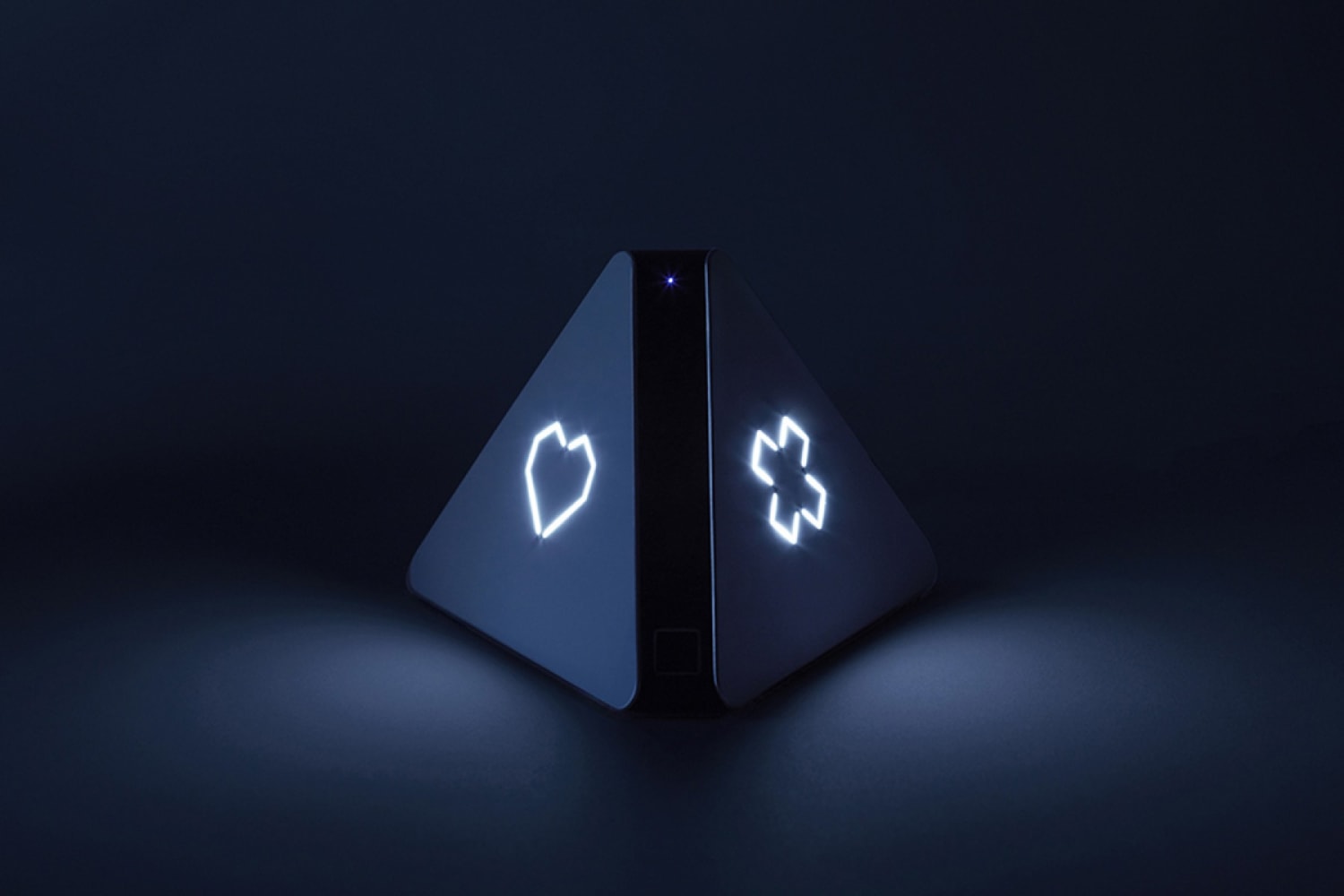
The French startup Prizm represented a different approach to contextually aware devices. It describes its new music player as an AI-powered device that is “the first music player that senses the current mood in the room, to play music that everyone will love.”
By “listening” to a room, Prizm can differentiate whether listeners are having a party, chatting or relaxing alone. A simple “heart” button allows users to build playlists without opening their computers or a smartphone app. “It’s personal curation done completely passively,” said cofounder and R&D manager Olivier Roberdet.
Ubiquitous immersion
Frank Rose described the concept of digital immersion at length in his 2013 book The Art of Immersion: How the Digital Generation Is Remaking Hollywood, Madison Avenue, and the Way We Tell Stories. At CES 2016, much of his commentary was brought to life.
From virtual reality, to 360-degree TVs and cameras, to screen interfaces being applied everywhere from the interiors of cars to the front doors of refrigerators, technology is adding additional layers of immersion to retail, music, gaming and entertainment.
GoPro announced the introduction of a 360-degree camera aimed at consumers rather than professionals. GoPro’s Odyssey, announced at the YouTube keynote, allows users to capture 360-degree and 3D video for virtual reality devices. Nikon also launched KeyMission, a 360-degree action camera.

GoPro has been working with YouTube and virtual reality storytelling company Vrse, which helped the New York Times develop its VR app. Chief business officer Robert Kyncl said that YouTube will grow its virtual reality video offerings in future.
Syfy Labs, a new initiative from the Syfy cable network, exhibited its multi-pronged approach to immersive storytelling. In partnership with Phillips Hue, Syfy has created lighting for viewing areas that responds in real time to events occurring on screen. Rather than being based on an algorithm, these responses are pre-planned and triggered by the specific narrative of the show. “We’re making these by hand and effectively scoring the episodes with light,” said Syfy senior vice president of digital Matthew Chiavelli.
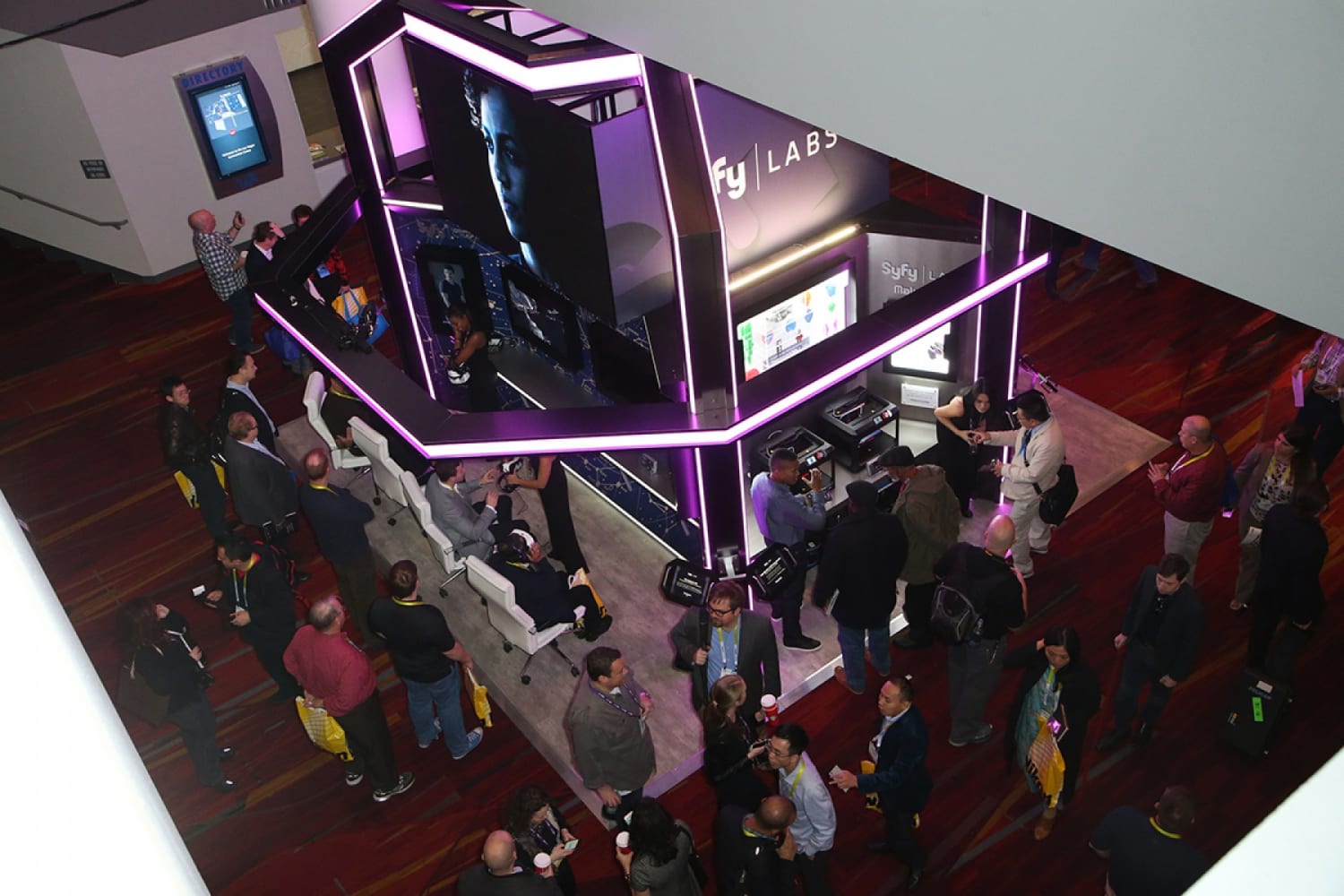
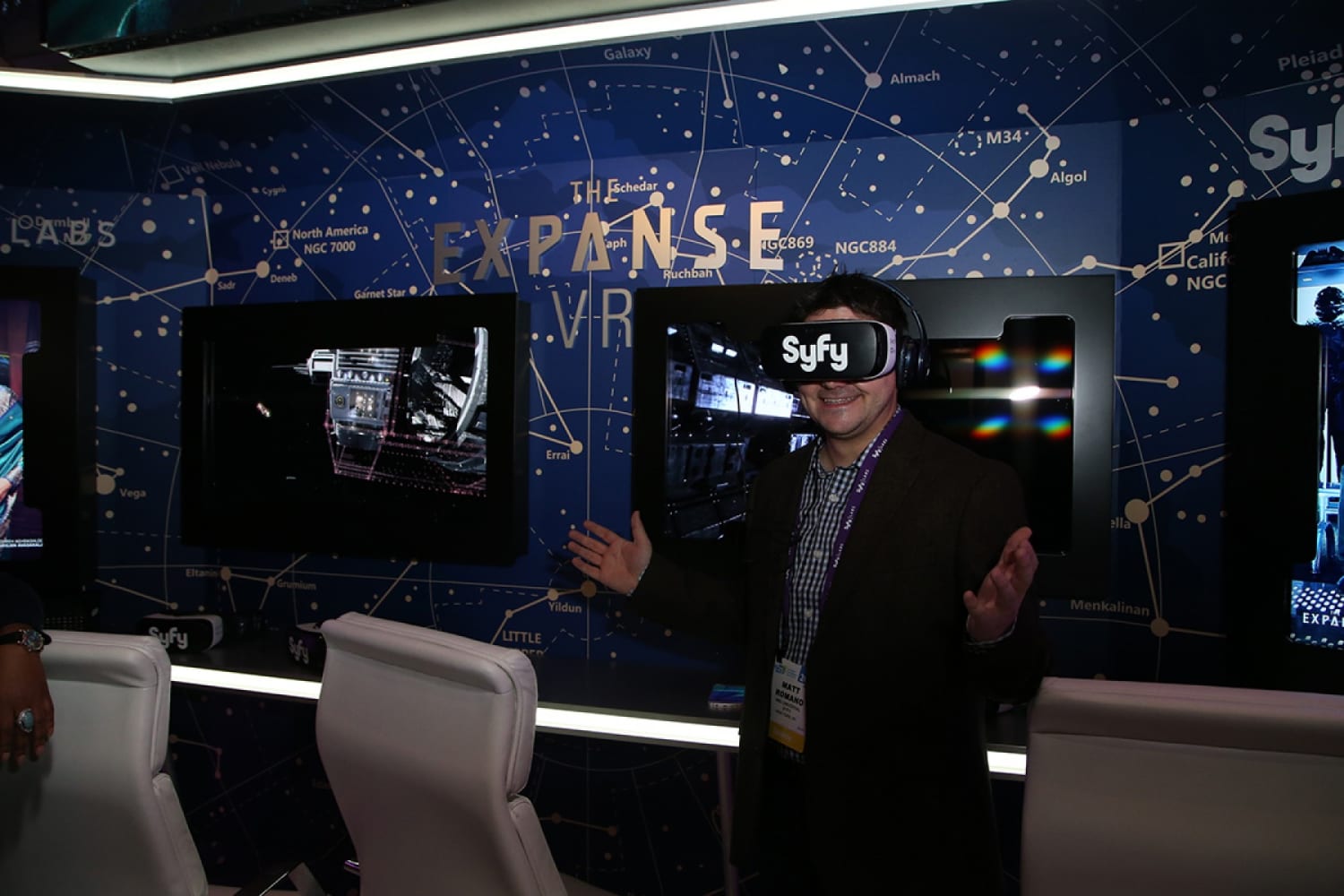
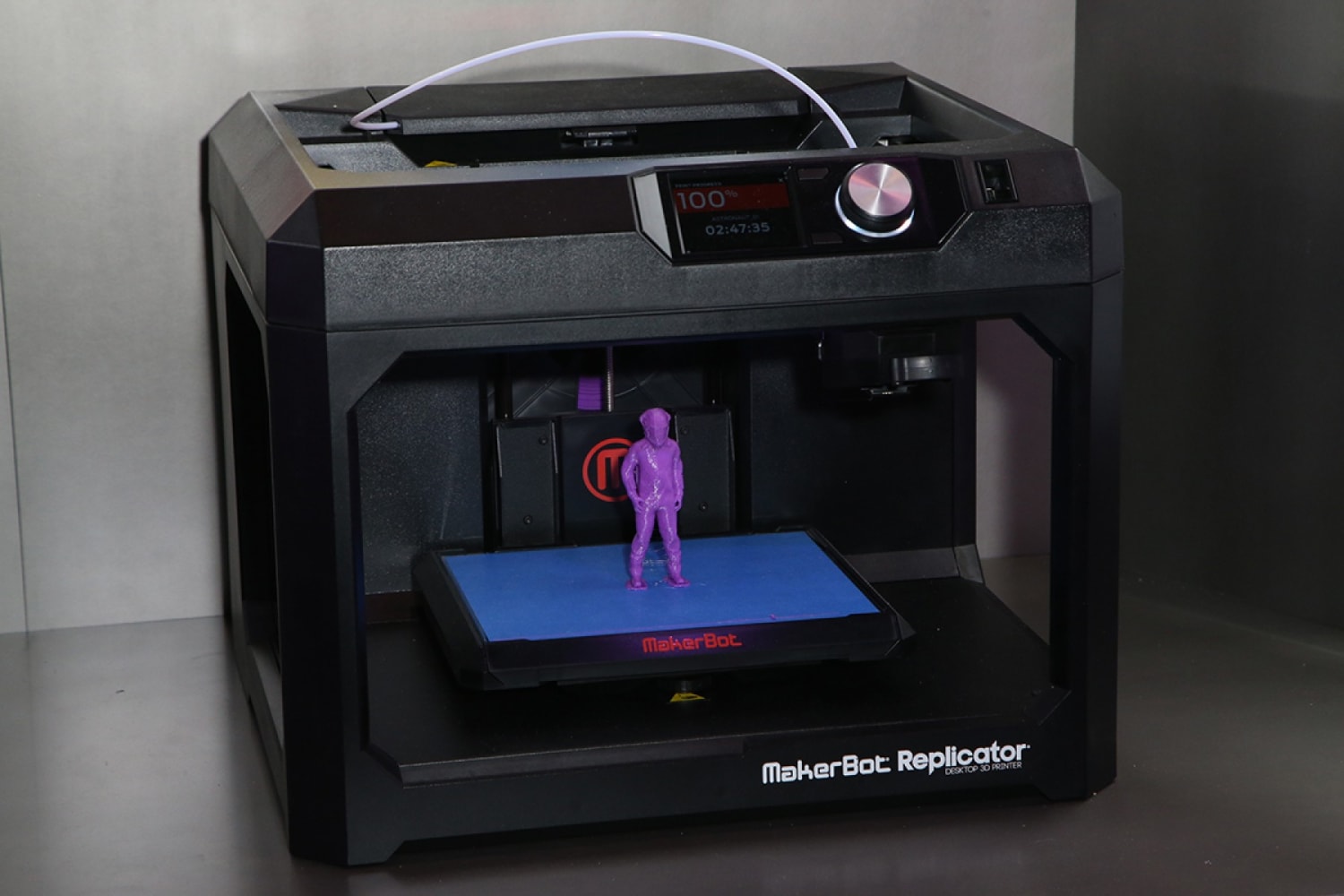
Additionally, Syfy is releasing 3D printing files as content on MakerBot’s Thingiverse platform, which allow fans to create objects themed around Syfy shows. And a VR app allows users to explore spaceships from The Expanse, a new series that imagines a far future in which the Earth and Mars are on the brink of war.
Auto companies were also getting in on the act. Mercedes presented its F015 Luxury in Motion concept car, a self-driving vehicle that allows users to convert the front, rear and sides of the car into a full-scale 360-degree digital entertainment screen, powered by gesture and eye control. Bosch introduced a haptic touch screen to its car interiors, replicating the feeling of touching a screen on a flat interface.
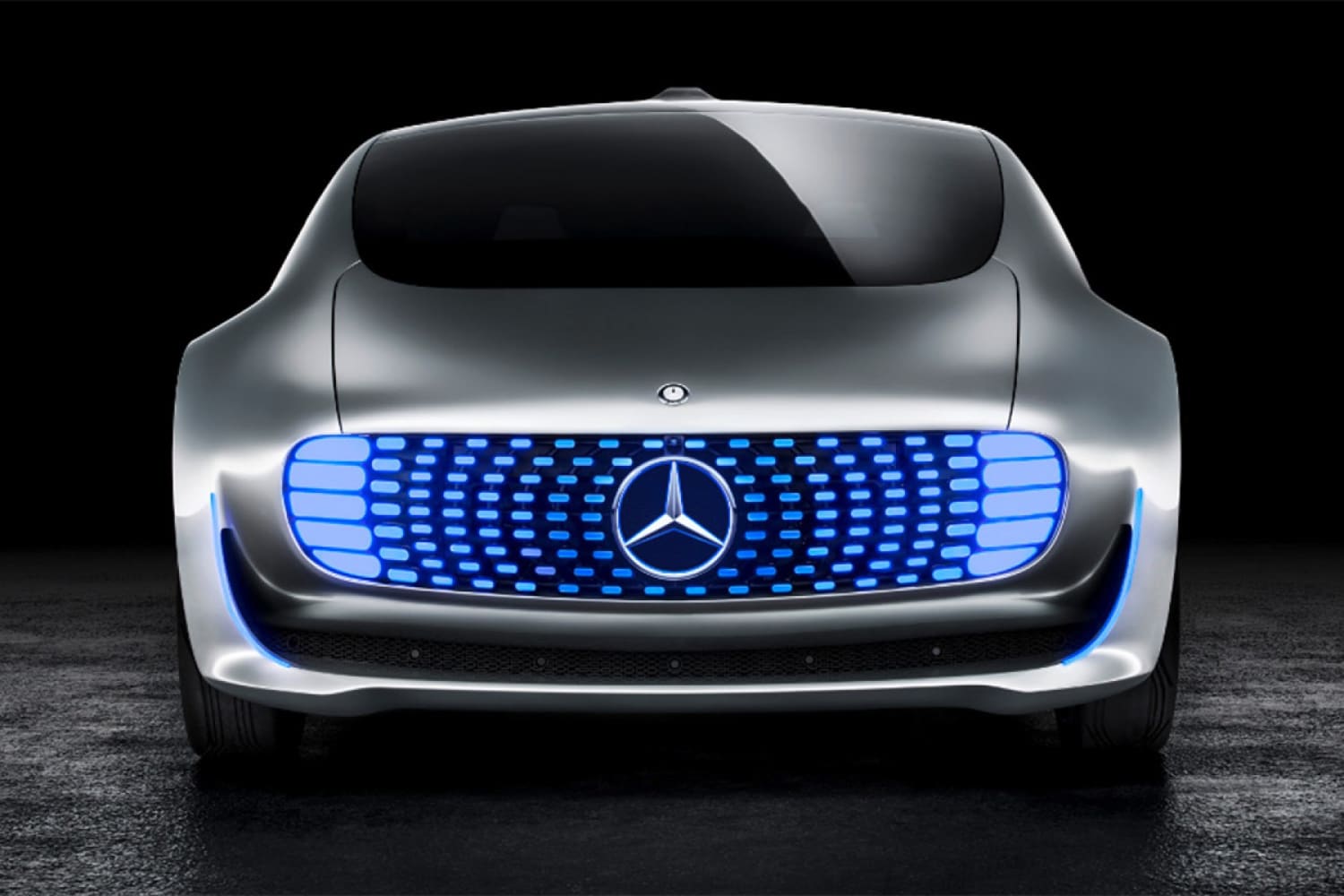
The subtle, persuasive, smart home
In another direction, numerous companies are making home environments and Internet of Things technology more seamlessly wrapped into interiors, rather than grafted onto existing set-ups.
Sony’s Life Space UX, for example, is a home set–style display including a 4K Ultra Short Throw Projector, LED light bulb speakers, and glass sound speakers that look like designer lamps.
Sleepnumber was showing a new bed with built-in digital tracking technology, a departure from many “smart sleep” companies that attempt to add sensors to existing beds.
Other smart beds also seem designed to nag their users about poor habits that may include too much late-night drinking or binge TV watching, but Sleepnumber’s bed helps improve sleep in a more passive way. For example, if it finds that a user sleeps better at a certain temperature, it will communicate with a smart thermostat to adjust the environment accordingly.
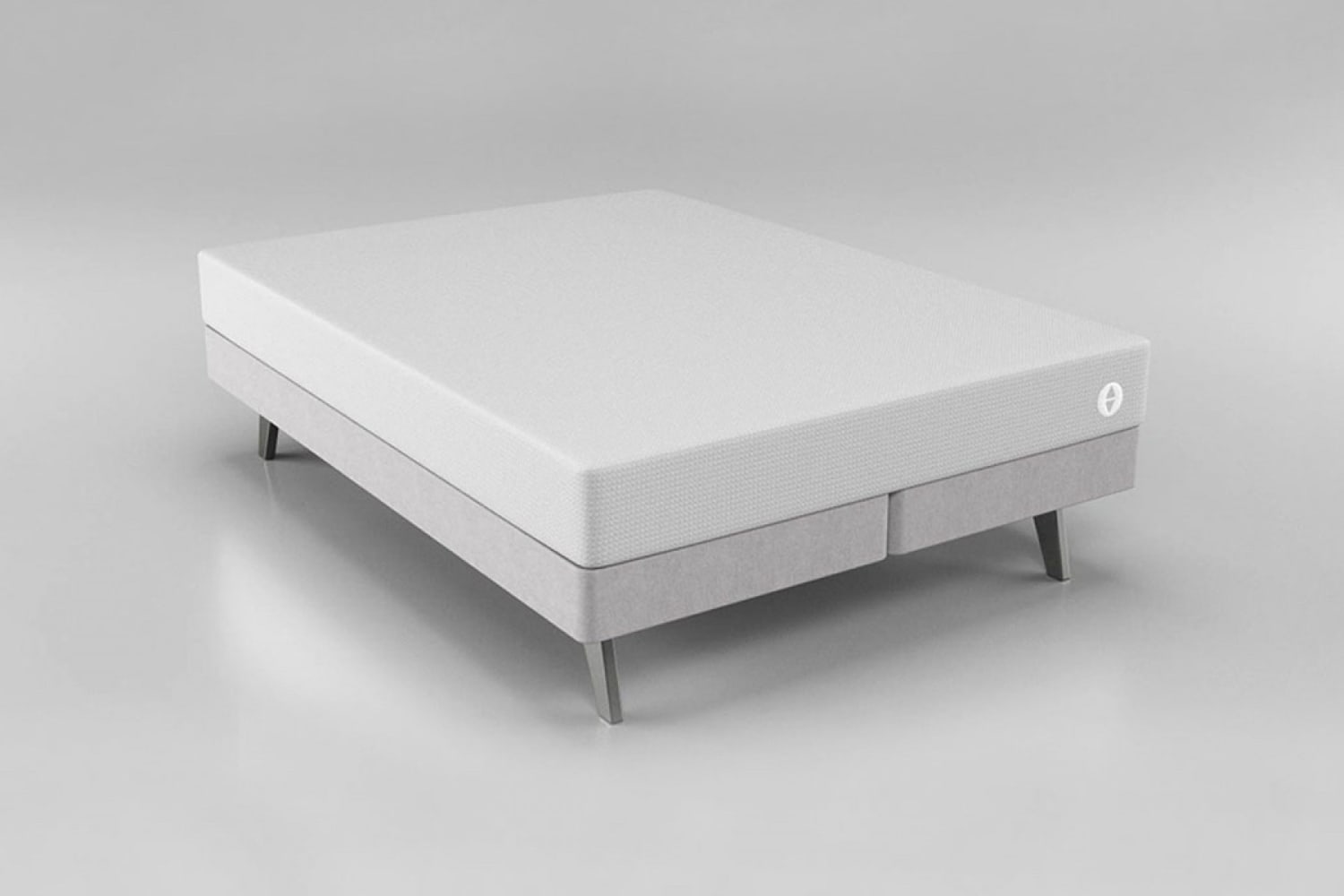
Hydrao, a new smart showerhead on view at CES, helps users conserve water through a subtle, persuasive interface. Its colored LED lights are powered by the motion of water through the device, and alert users as they approach water usage targets.
“It helps you change your behavior without constraints,” says CEO and founder Gabriel Della Monica. “When you say ‘stop, you have to change,’ it’s not very effective. With Hydrao, you see the color changing slowly and you say ‘oh it’s purple, I don’t want it to turn red so I need to turn it off.’ That’s better.”
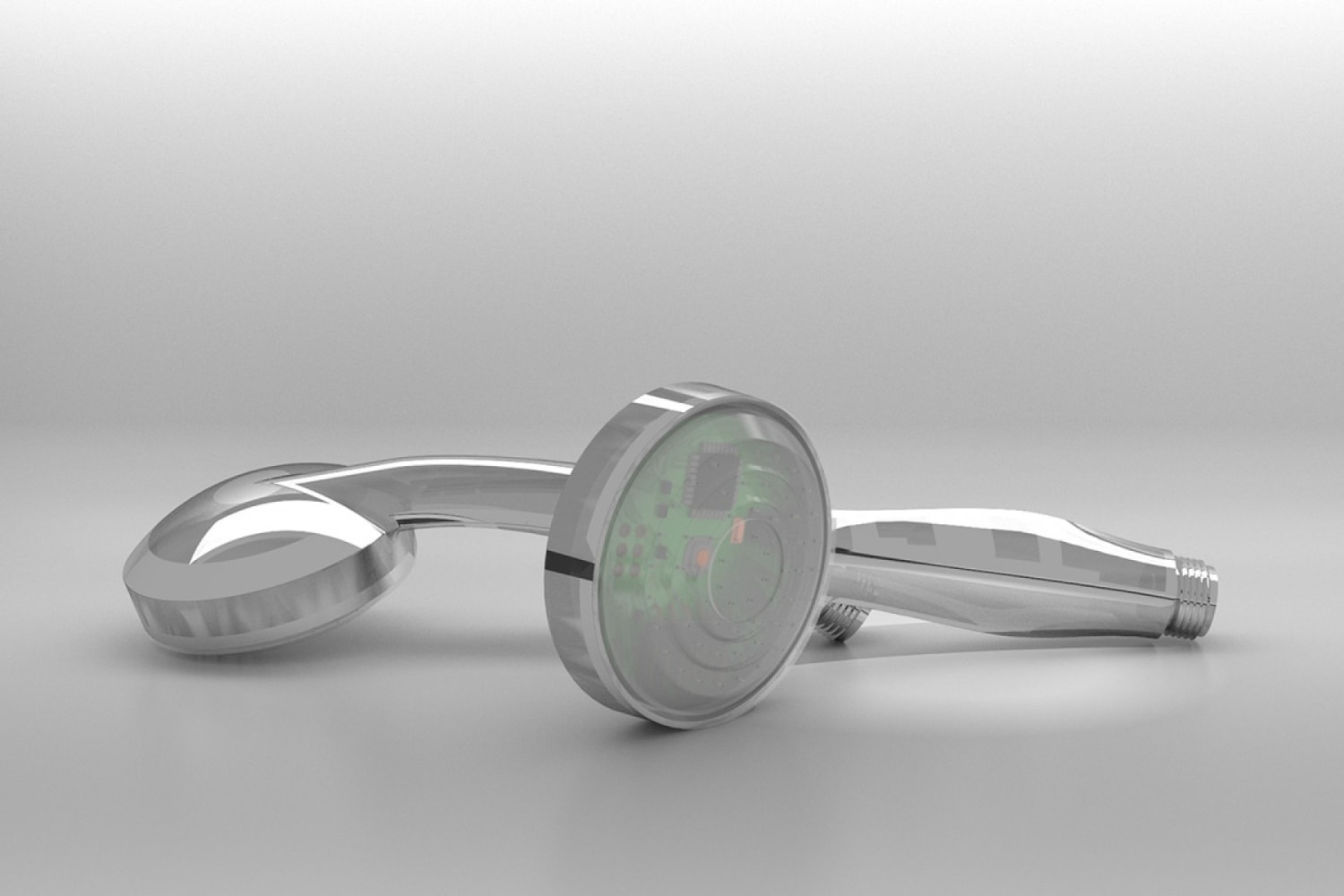
Future of retail
Hints at the future of retail were also on display throughout the conference. Retailer Lowes’ unveiled Holoroom, a VR shopping experience that allows customers to not only experience different kitchen designs, but also virtually apply them to their own homes using adaptable dimension settings.

John Vary, innovation manager at UK-based retailer John Lewis, sees a bright future for VR in retail. “I loved HTC Vive, the virtual reality experience, because it allows you use virtual reality in groups,” he said. “This could have amazing applications in retail as it will make it social, too.”
Samsung launched its new Family Hub refrigerator, which features a large touchscreen embedded in the door. The product is integrated with a new service called Groceries by MasterCard, which allows users to shop for food and beverage items directly from their refrigerators. Initially integrating with Fresh Direct and ShopRite, the service will expand to other merchants in 2016.
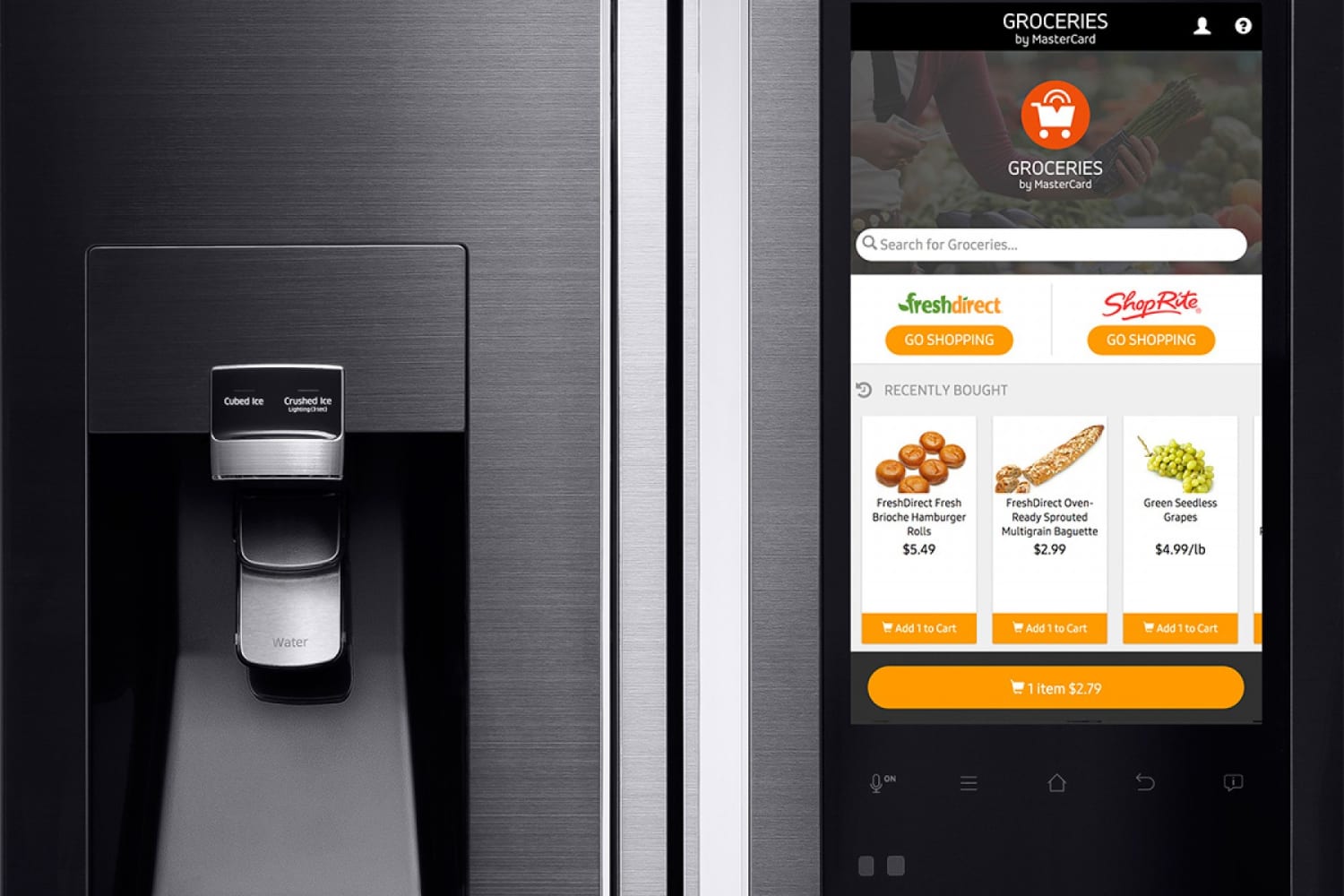
Panasonic introduced high-speed projection mapping in its Future of Retail display, which created light displays in real time based on consumer movements. It also introduced smart shop windows that can instantly transform from an opaque digital image to a transparent view of real-life products. Users can also able to tap the window and find out the price of items on display.
“We can also put touchscreen on the windows,” said Rick Weinstein, manager of MagicInk Interactive, which developed the window and was recently acquired by Panasonic. “You can touch and get different colors, textures and other information for each product that’s available.”
Everything is intelligent
Devices at CES this year were not simply connected, like the first generation of Internet of Things gadgets. Increasingly, they were enabled with human-like abilities to process information, from machine vision to artificial intelligence.
IBM announced four new partnerships with its Watson “cognitive computing” service. Fitness company Under Armour has built a large community of online fitness enthusiasts through its Record app (which it says is the world’s largest, with 160 million users), and will now use Watson to analyze this data and offer recommendations.
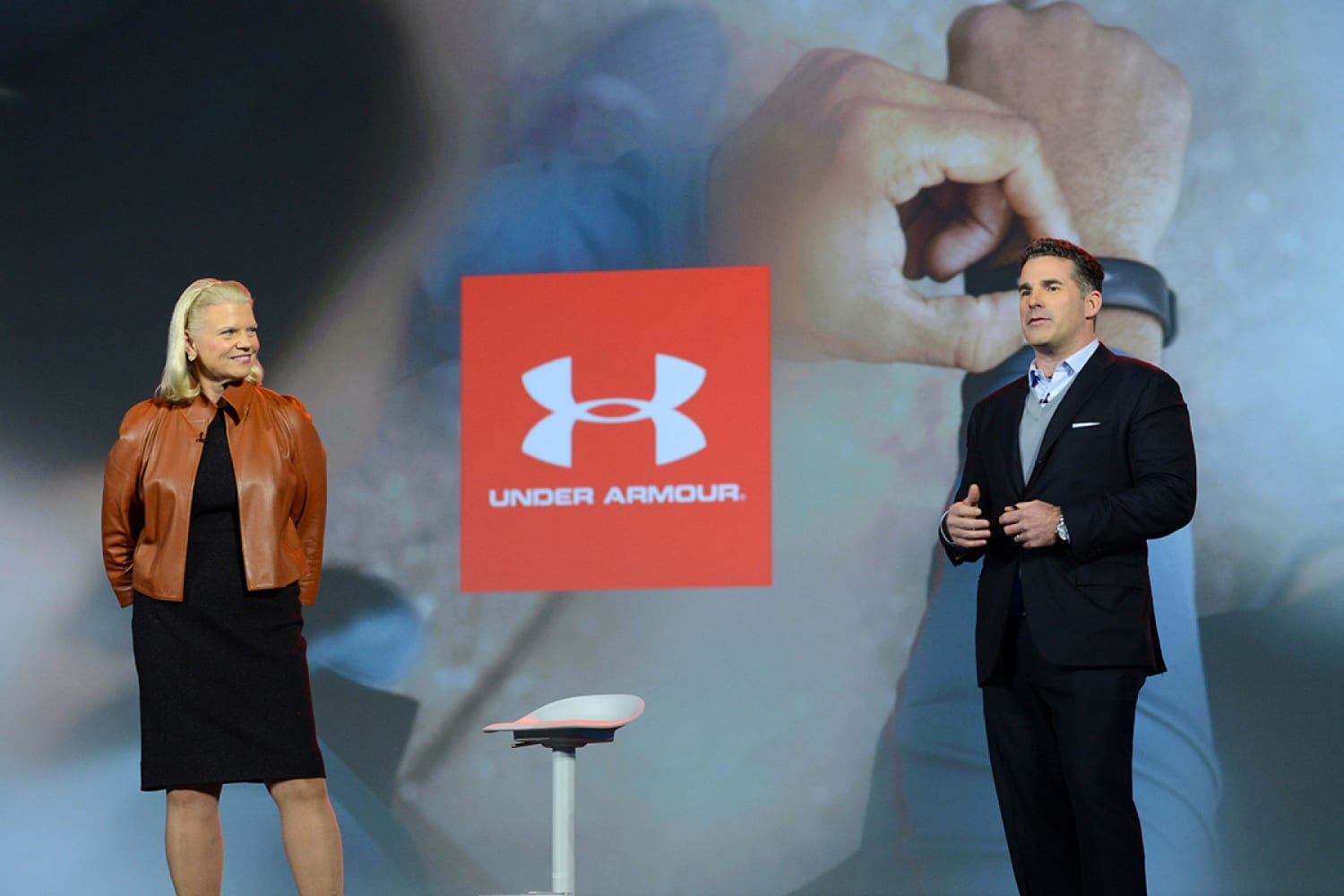
“When it comes to digital health and fitness tracking, the past ten years have been about data collection,” Kevin Plank, founder and CEO of Under Armour, said in a statement. “We’re now at a point where a shift is occurring and consumers are demanding more from this information.”
A representative at the Under Armour booth said that with Watson, for example, a user could receive tailored personal fitness advice based on a comparison with millions of other users with the same height, weight and other characteristics, doing away with a “one size fits all” approach to digital fitness coaching.
Watson also said that it would help power Pepper, the “emotional robot” created by SoftBank Robotics, partner with Whirlpool to make appliances more personalized, and work with Medtronic to create a smarter app to manage diabetes.
French company Netatmo last year unveiled an indoor home security camera with the ability to recognize faces, and this year presented an outdoor version called Presence. The camera can recognize the face of an unknown person loitering outside the home or an unfamiliar car, for example.
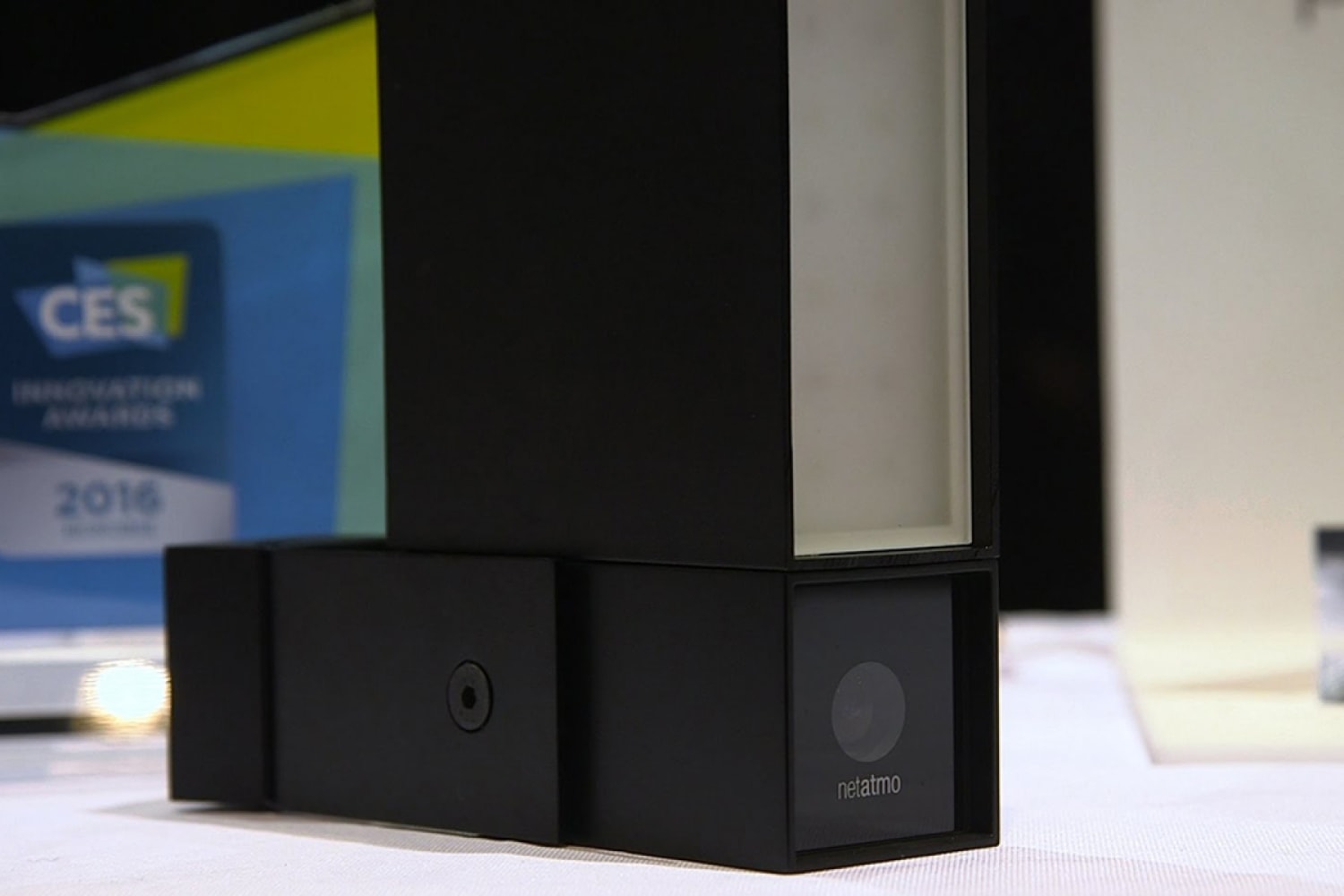
“We think that artificial vision is clearly a very good topic to make innovative products, because you can watch what’s happening with people at home and give them short and precise notifications,” said Netatmo CEO Fred Potter. “As the technology evolves, we’re going to be able to differentiate more and more things and situations, to not only tell you that the car is parking, but that this is a Toyota Corolla, and things like that.”
Wearables trim the fat
While wearable devices once again proliferated, companies were increasingly differentiating themselves not on the simple ability to sense more data from the body, but on design and tangible benefits for the end user.

“People are aware: I’m no longer explaining what a wearable is, I’m no longer explaining what a smart watch is,” said Preston Moxcey, vice president and general manager of wearable technology at Misfit, which released a new version of its fitness tracker, dubbed the Shine 2. “In the end, we believe that activity trackers will become more or less standardized, and it will come down to brand and design.”
The new Shine 2 is wider and thinner, and contains colored LED lights that convey discreet messages to the wearer. It also includes haptic feedback for message notifications.
Browser Tracking Protection enabled. Unable to display content.

Mio Global, meanwhile, differentiated its fitness wristband with a new data metric based on real-life clinical research. While many fitness bands measure activity according to an arbitrary metric, Mio’s Personal Activity Intelligence score can help users protect themselves against cardiovascular disease.
And at the Intel booth, designer Becca McCharen, CEO of the brand Chromat, wowed audiences with her adrenaline dress, a high-end fashion piece that expands and contracts in response to a wearer’s adrenaline level. At a point when wearable tech is no longer a novelty, it took daring designs like this to grab attention.
Smart cities
The smart city was a key theme at CES, as speakers addressed how technology in cars and connected devices with sensors will transform the way our environments are built and navigated.
Beyond Smart Cities: The Future of Urban Mobility was a keynote panel led by Kent Larson, director, Changing Places Group, MIT Media Lab. The talk featured panelists Volkmar Denner, CEO and CTO of Bosch; Secretary Anthony Foxx at the US Department of Transportation; Steve Mollenkopf, CEO, of Qualcomm; and Professor Amnon Shashua, co-founder, CTO and chairman of Mobileye, a tech device that allows vehicles to sense their surroundings.
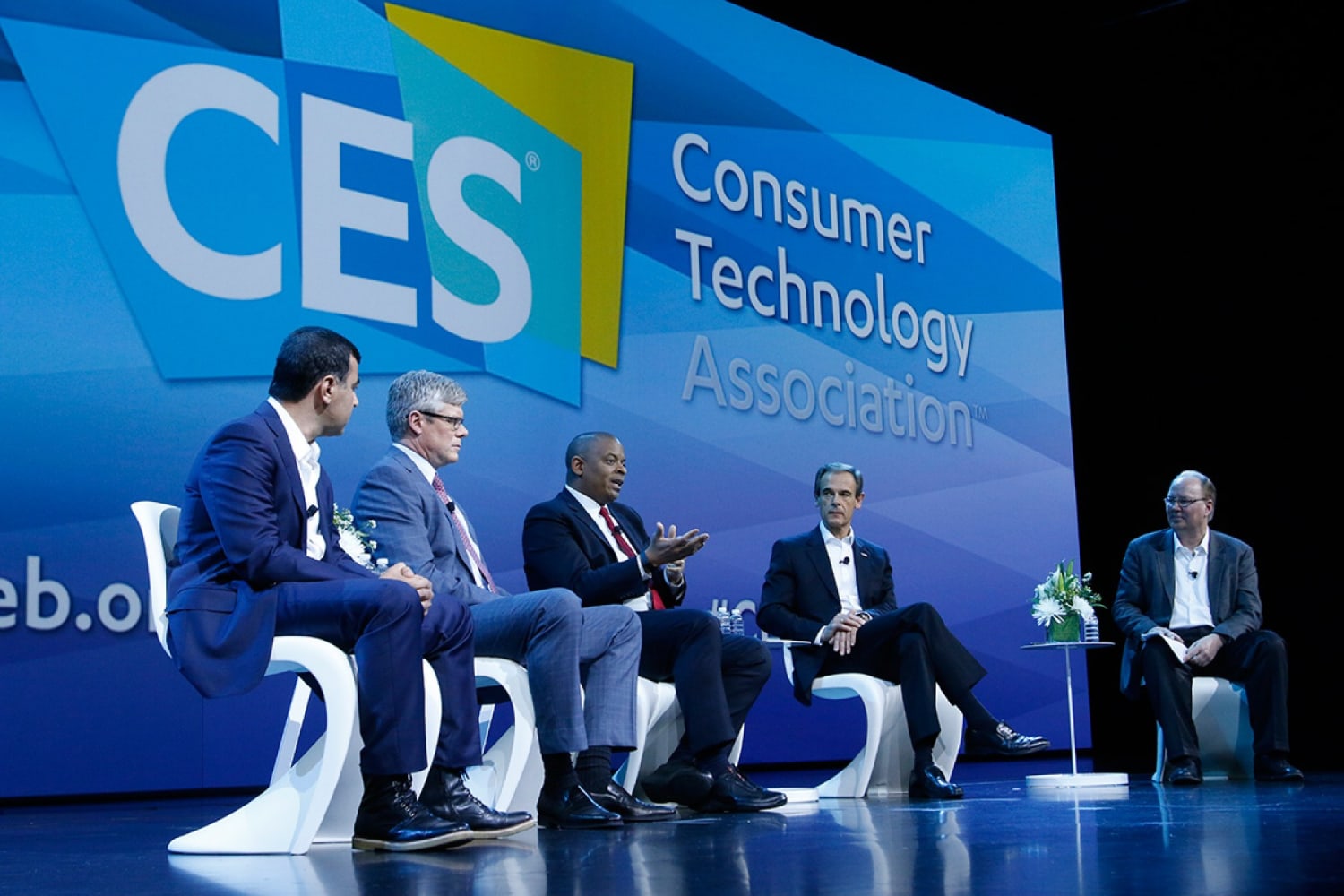
The discussion considered the future of vehicles amid a landscape of rising urbanization, car-free and pro-cycling cities, and millennials who are less inclined to own cars. “The future car is connected, electrified, and automated,” said Denner, whose company produces technology for leading car brands. He added that he sees the future vehicle as a new form of personal assistant to consumers.
Though totally autonomous cars in cities are a way off, Denner said, their introduction will come in waves: self-parking by 2018, autonomous freeway driving from exit to exit by 2020, and onward to full autonomy in all settings.
Elsewhere, in a talk hosted by CTO of the United States Megan Smith, Michael Mattmiller, CTO of Seattle, talked about how technology was being used to improve the city. Crowd-generated data, he said, was helping create real-time updates on public transport. Seattle has also been using sensors to measure weather and identify new microclimates, alongside giving real-time weather updates.
Moderator Kent Larson raised the question of whether the automotive industry or technology brands were better suited to building the cars of the future. Shashua places his confidence in car brads, because technology companies are too reliant on planned obsolescence. “When we buy a car it has to work, and if it doesn’t work well we’re very upset,” he explained.
Qualcomm, too, was venturing into the smart city, and sees cars as future sources of real-time information about urban areas, explained Chris Chappell, CEO of Assurenet, a data analytics company that has licensed its technology to Qualcomm. “There’s 60,000+ taxis in New York. If all of those were equipped with some kind of data gathering device, then the taxis can capture all kinds of data about what’s going on in the city,” he said.
Meanwhile, three major car brands said that they are focusing on using cameras on connected cars to develop extremely precise mapping systems. Toyota plans to create its own maps, while General Motors and Volkswagen have announced partnerships with chip and software maker Mobile.
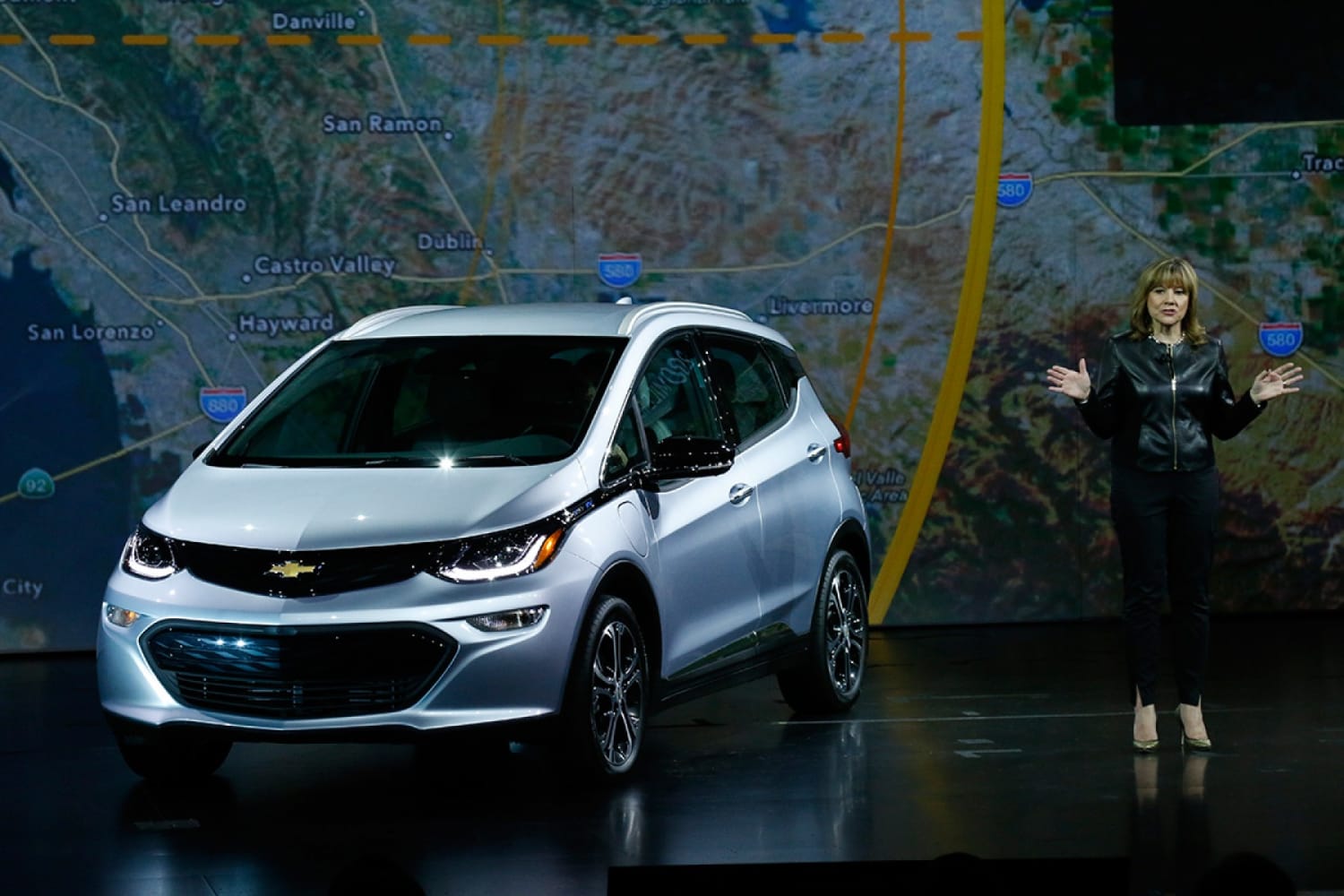
Baby tech
Recently, we’ve seen the rise of Soylent other targeted nutrition products for adults. At CES 2016, the trend was reaching babies. Gerber presented its new BabyNes nutrition product, a “smart nutrition system” that includes six varieties of single-serve formula capsules for infants and toddlers. BabyNes is based on the idea that the nutritional needs of babies vary on a month-to-month basis as they grow, according to the company.
The capsules are designed to give the exact right serving size and also filter out bacteria in the water. Meanwhile, a wifi-enabled machine mixes bottles to the correct temperature, and is connected to an app where parents can record their baby’s development and receive feeding updates.
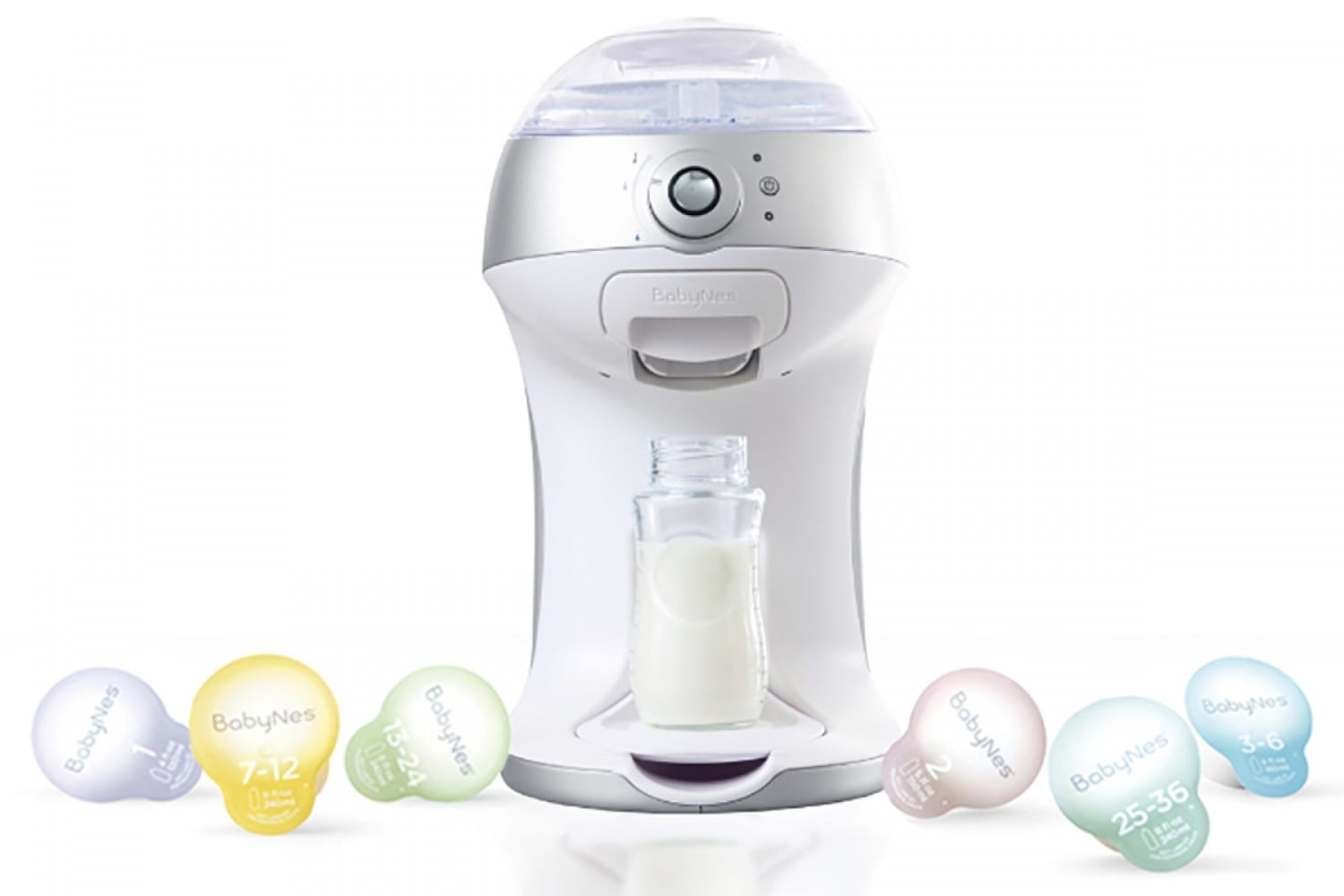
Another interesting aspect of the emerging “baby tech” market concerned fertility and pregnancy devices. In our Future 100 report, we charted the new wave of apps and technology aimed female-centric concerns, from the Looncup menstrual cup that monitors menstruation and is connected to an app, to Elvie, the connected Kegel exerciser, to Apple’s new period tracker.
ReliefBand is a newly launched drug-free wearable used to help with nausea and vomiting during pregnancy or when in motion. The band works by pulsating on the wrist, activating the neural pathways to correct the mechanisms the stimulate sickness.
French firm Withings unveiled a wireless blood pressure monitor, which can track blood pressure and heart rates throughout pregnancy and compare results with World Health Organization guidelines.
Bloom, a San Francisco-based company, also showcased Belli, a lightweight connected patch and “pregnancy coach” that helps expectant mothers monitor contractions in the third trimester.
Beauty tech
The beauty device market is set to reach $54 billion by 2020, according to Persistence Market Research, and is showing a CAGR of 18%. The market is diversifying beyond hair dryers and removers to deep cleansers and at-home cosmetic treatments.
France-based Wired Beauty introduced MAPO, which it calls the world’s first “connected beauty mask.” The product is both a diagnostic mask and a tool to help skincare absorb better. The connected mask conducts detailed analysis of the user’s skin, uploads to an app, and tracks progress. The mask itself is personalized to the user, created using 3D scanning to fit facial contours and embedded with sensors.
Browser Tracking Protection enabled. Unable to display content.

Foreo, the Swedish brand that specializes in pulsating deep-cleansing tools, introduced Iris, an eye massager that claims to reduce visible signs of aging and fatigue. The device stimulates blood flow in the under-eye area, while also helping the skin absorb eye creams and serums more effectively. All of these additions are indications that consumers want personalization from beauty, as well as ways to make existing products more effective.
For more insights from CES 2016, see worldwide director of the Innovation Group Lucie Greene’s daily columns for Campaign: part 1, part 2.
Please provide your contact information to continue.
Related Content

VML Prague and KitKat offers a digital break with its new "Phone Break" campaign

